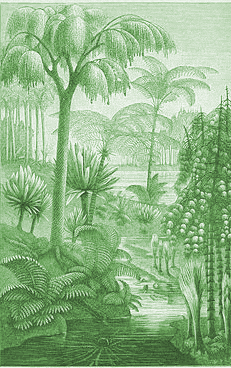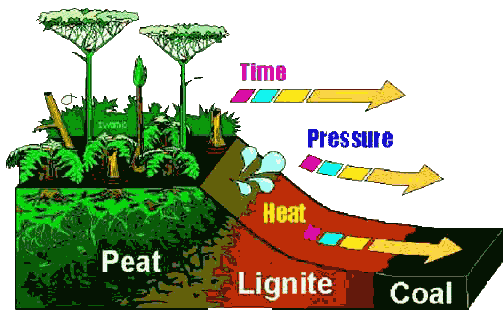 ... and coal mines
... and coal mines
But it's not just scientists that are interested in Appalachia -- energy companies are very interested as well, because that's where a lot of the coal in the U.S. is located. About 30% of the coal production in the U.S. comes from the Appalachian region, which means about 15% of electricity generated in the entire country comes from coal from this one small area.
So how did the coal get there?
The Appalachian region has always had lots of plants. Back in the Carbonifersous era, some 300 million years ago, this area was full of swamps. When the plants died, they didn't even have time to decompose -- instead they simply got buried. Over time, high pressure, heat, and time compacted this organic material into coal. That's why we call that swampy era that happened 300 million years ago "the Carboniferous era": the name means "coal-bearing". (It is also called the Pennsylvanian era, because that coal was first found in Pennsylvania.)
On the right is an artist’s depiction of how this area looked back then. See all the leaf and organic matter? That is the beginning of the Appalachian coal deposits. Some of it got eaten up by decomposers, but the rest just sat and built up large piles of organic matter.
Eventually, through movements in the earth's crust, whole mountains got piled on top of that organic goop, and squashed it right into coal. And that's why there are mountains on top of the stuff that we want today...
Copyright University of Maryland, 2007
You may link to this site for educational purposes.
Please do not copy without permission
requests/questions/feedback email: mathbench@umd.edu